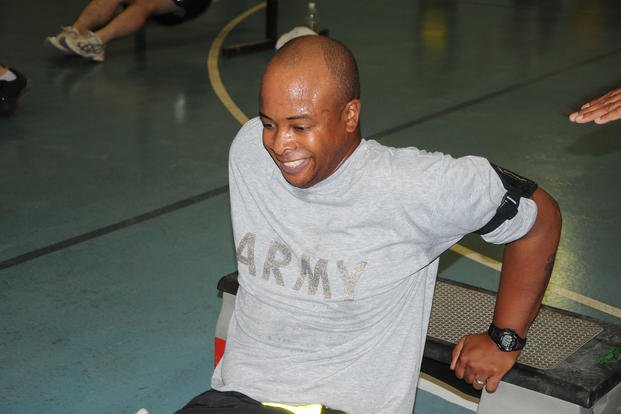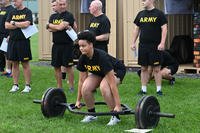Every year great athletes in incredible condition attend Spec Ops or advanced military or police selections programs within the tactical professions. Classmates in these programs may have been three-sport athletes in high school, All-Americans in college, or even professional or Olympic-caliber athletes. They have amazing abilities in a variety of skills.
Some of your classmates are also average people who were just OK in sports, but they worked hard manual jobs and consistently squeezed in their preparation when they could throughout the day.
Because accidents happen, all have chances of getting injured in selection. All have the option to quit at any time when the days turn into nights, warm turns into cold and discomfort sets in for long periods of time.
Often, no matter what an individual's athletic history and no matter whether they have the mental toughness needed or the fitness standards mastered, their bodies fail them in some way, whether that's a traumatic injury or the even more common overuse injuries or illness.
Tips for preventing injury
Sometimes less is more. Pull back from the frequency, intensity and time of your workouts. Add in a mobility day or take a few days off per week, especially if burning the candle at both ends results in reduced sleep or higher stress levels at work or school.
If you actively pursue recovery, you will see performance gains because of your ability to recover -- not because you decide to work even harder.
Add flexibility and mobility. Flexibility and mobility are two important elements and can be done anywhere and just about any time. At the end of the day is a great time to catch up on missed stretching, but before-and-after workouts with proper warmups and cooldown are essential to building and maintaining your ability to be more pliable when under stress and loads.
Strength cycles. Make sure you do some resistance training to build some strength. Durability is related directly to strength and your ability to handle load bearing, the impact forces of running or rucking, and the high repetitions of calisthenics.
Progressive running. You have to build up to any running cycle you start. Do not start off where you left off "back in high school." Jumping into a four- to five-mile run after having not run in several months or longer can lead to overuse injuries that plague your feet, shins, knees, hamstrings, Achilles' tendons, calves and more. See Running Plans Discussion VIDEO options.
Don't do stupid activities that risk injury during training or preparation for selection. Many people are playing contact sports, practicing martial arts, doing motocross, running ultramarathons and participating in other activities that have a higher risk of traumatic injury in the months before attending tough selection programs. You have to factor in traumatic injuries and overuse injuries at any time but especially during the months before selection. Time to get serious.
Update running insoles and shoes often. You will find a bad pair of running shoes will interfere with running, especially when increasing volume and speed. Consider ankle support with boots if running on trails and uneven ground to avoid common ankle sprains.
Half of fatigue is body heat. Find ways to cool your body and stay hydrated If you're sweating profusely; make sure you get electrolytes as well. Your performance will improve, and you can avoid common heat casualties.
Related articles and video discussions
Injury Prevention #1 (Footwear) -- How do you prevent injuries? Can you even prove it when you do? Jeff Nichols and Stew Smith discuss many ways to avoid and prevent injuries through quality gear, smart training and knowing your body.
Injury Prevention #2 -- Pre-workout phase
Injury Prevention #3 -- During workout phase
Injury Prevention #4 -- Post-workout recovery
To say any one group has a higher rate of failure and injury or lacks the mental toughness not to quit would be disingenuous. There are graduates of spec ops selections who represent all heights and weights, ages, athletic abilities, work histories and life experiences.
This creates a diverse group of teammates who are highly effective in their mission. The common denominator is not whether you were a high-level athlete, but more so that you were tough enough not to quit, get injured or ill during the process of selection.
To build this level of grit, you need to address any weakness going into your first training cycles and take time to develop weaknesses into something that resembles a natural strength.
We typically have a different journey to get the standards set in military selection programs. The journeys all have to meet at the same point, but the process to get there may differ immensely:
The Endurance Athlete Prepares for BUDS
The Hockey, Baseball, Rowing Athlete (and others) Prepare for BUD/S.
The X Games Type Athlete Prepares for BUD/S
The Non-Athlete Prepares for BUD/S
The Lax, Rugby, Soccer Player Preps for BUD/S
The Wrestler/Combative Sports Athlete Preps for BUD/S
CrossFit Athlete Preps for BUD/S
Powerlifting/Football Player Preps for BUD/S
Preparing for BUDS with Sports
Stew Smith is a former Navy SEAL and fitness author certified as a Strength and Conditioning Specialist (CSCS) with the National Strength and Conditioning Association. Visit his Fitness eBook store if you’re looking to start a workout program to create a healthy lifestyle. Send your fitness questions to stew@stewsmith.com.
Want to Learn More About Military Life?
Whether you're thinking of joining the military, looking for fitness and basic training tips, or keeping up with military life and benefits, Military.com has you covered. Subscribe to Military.com to have military news, updates and resources delivered directly to your inbox.


















